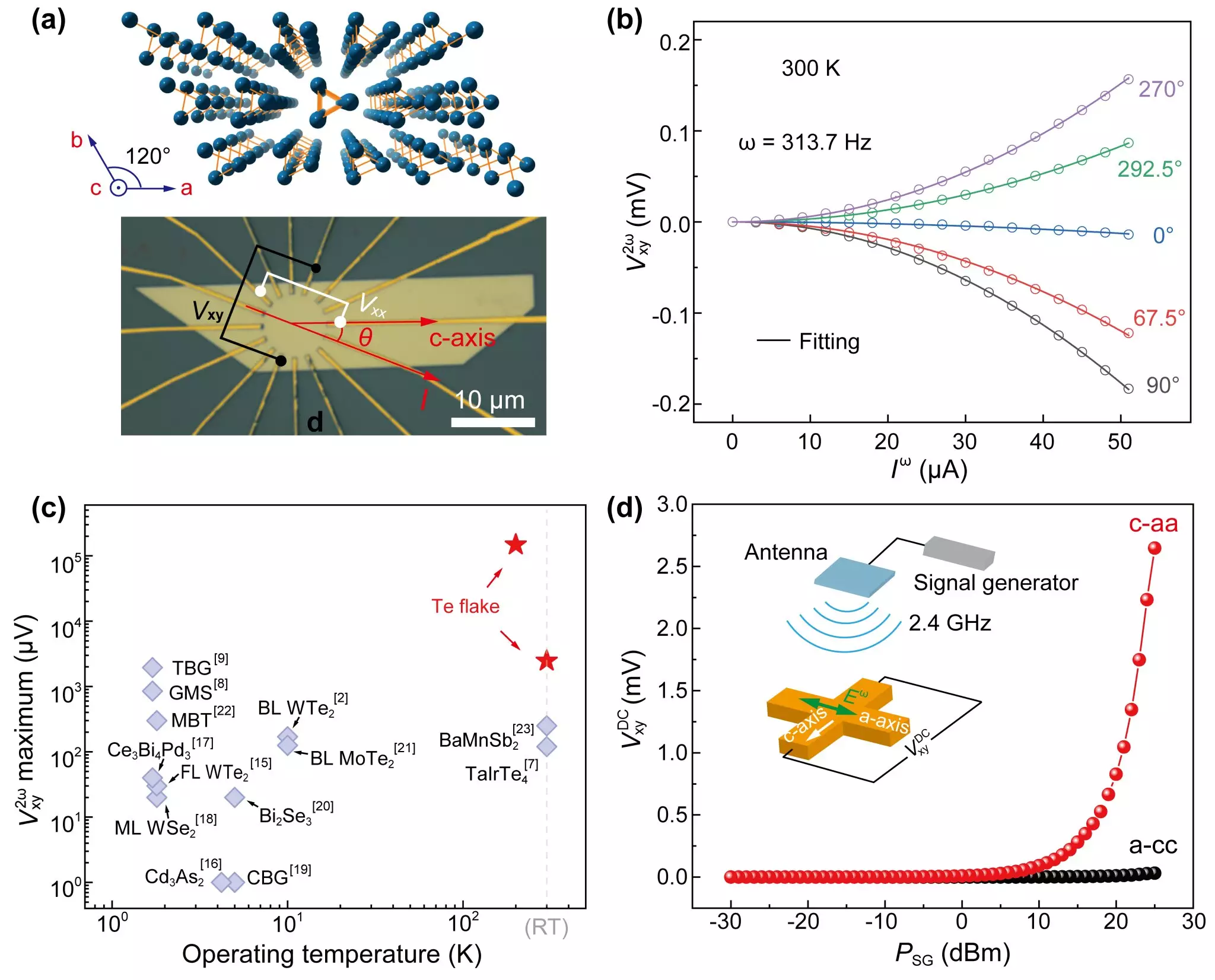The exploration of nonlinear Hall effects (NLHE) has garnered significant attention in the realm of semiconductor physics, presenting exciting potential for advanced electronics. Unlike conventional Hall effects, NLHE serves as a second-order response to alternating current (AC), adept at generating vital second-harmonic signals independently of an external magnetic field. This innovation breaks traditional barriers and hints at numerous applications, particularly in the realms of rectifying devices and frequency-doubling technologies. However, the scientific community has grappled with considerable challenges in this field, such as minimal Hall voltage outputs and the confinement of these phenomena to low-temperature environments.
A notable advancement in this area was recently achieved by a research team from the University of Science and Technology of China (USTC), led by Prof. Zeng Changgan and Associate Researcher Li Lin. Their pioneering work focused on the elemental semiconductor tellurium (Te), demonstrating significant NLHE at room temperature. Previous notables, like Dirac semimetal BaMnSb2 and Weyl semimetal TaIrTe4, showed limited Hall outputs and lacked adaptability. In contrast, the structural characteristics of Te, mainly its one-dimensional helical atomic chain configuration, make it an extraordinary candidate for analyzing NLHE, as this arrangement inherently breaks inversion symmetry.
Through meticulous study, the USTC team successfully identified substantial NLHE in thin flakes of Te, reporting a maximum second-harmonic output of 2.8 mV at room temperature. This output represents an unprecedented order of magnitude compared to prior records. The team also realized that the NLHE in Te is primarily facilitated by extrinsic scattering phenomena. Importantly, the structural integrity and symmetry breaking of the thin flakes present a crucial influence on the observed effects, providing a foundation for understanding the magnitude of the outputs.
In a further stride towards innovation, the researchers transitioned from traditional AC current applications to utilizing radiofrequency (RF) signals, achieving wireless RF rectification using Te thin flakes. This process revealed stable rectification across a broad range of frequencies, specifically from 0.3 to 4.5 GHz. This method diverges from traditional rectifiers that depend on p-n junctions or metal-semiconductor interfaces. Instead, the inherent properties of Te facilitate a zero-bias broadband response, rendering it a promising candidate for energy harvesting and wireless charging applications.
The insights gained from this groundbreaking study elevate our comprehension of nonlinear transport mechanisms within solid materials. The implications of harnessing NLHE in materials like tellurium promise to revolutionize the development of advanced electronic devices, opening avenues for efficient energy solutions in various sectors. As the scientific community absorbs the findings of this study, the evolution of electronics towards more efficient and versatile configurations appears not only plausible but inevitable.
This discovery exemplifies how innovative research can forge paths towards future technologies, stirring a resurgence of interest in elemental semiconductors and pushing the boundaries of what’s possible in electronic device performance and functionality.


Leave a Reply